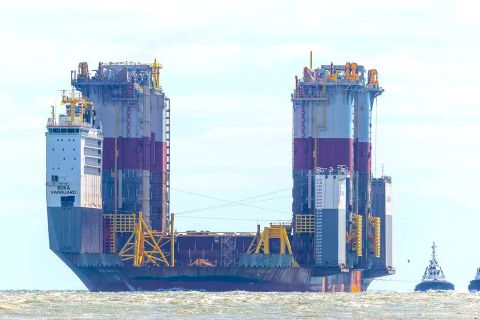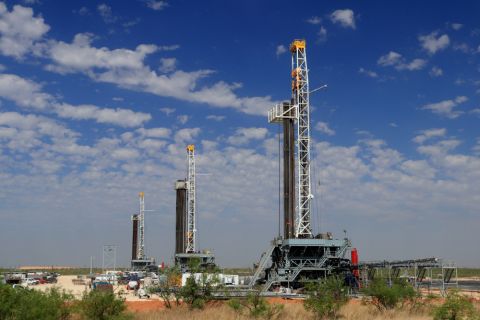We often hear talk of the “resiliency” of unconventional producers proving to be much greater than many thought a few years ago. But the reward for that may in the years ahead lie not so much in the U.S. as in the resiliency of export markets for crude and refined products.
Much has been made of the early March report by the International Energy Agency (IEA), in which it describes the U.S. as “becoming ever more dominant in the global oil market.” The IEA projects U.S. production growing by 3.7 million barrels per day (MMbbl/d) through 2023, accounting for more than 57% of the 6.4-MMbbl/d estimated growth in global output. Brazil, Canada and Norway will also contribute, and the four will “provide nearly all of the non-OPEC increase.”
Looking at the fundamental supply-demand picture (see: “Repeating 2014, or Breaking New Ground,” page XX), analysts at Citi have raised a red flag in that “parallels with 2014-2015 are emerging.” In essence, with up to 2.5 MMbbl/d of production growth projected to come from the U.S., Canada and Brazil, the risk is that exports overwhelm the oil market, starting with the Atlantic Basin, according to Citi. In turn, this could result in “potentially materially lower prices within the next 12 to 18 months.”
That said, others offer much more upbeat oil price projections, and Citi itself is quick to highlight the stature of the U.S. as the ‘fastest growing liquids exporter in the world” and likely the “largest single exporter of hydrocarbons” by the end 2018. “U.S. total oil exports have grown at the fastest rate of any oil exporting country, and this is likely to continue as long as prices support production growth.”
Forecasts of U.S. exports vary but show substantial gains over even the occasional spikes to 2 MMbbl/d reported by the U.S. Energy Information Agency.
A study by Wood Mac forecasts U.S. crude exports will “approach 4 MMbbl/d by the mid-2020s.” Citi estimates crude exports could hit 5 MMbbl/d, a jump of 3.5 to 4 MMbbl/d, by the end of 2022. The IEA projects export capacity reaching 4.9 MMbbl/d by 2023, as 10 oil export facilities are built or upgraded.
But the U.S. already counts as a “massive hydrocarbon hub,” according to Citi. As measured by the sum of gross imports and gross exports, including crude, products and NGL, the U.S. holds a 12% position in total oil liquids trade compared with China’s 8%, Saudi Arabia’s 6% and Russia’s 5%.
Citi cited year-end 2017 data that showed the U.S. as a gross importer of some 10 MMbbl/d of crude and petroleum products, accounting for about 14% of global gross imports, and a gross exporter of some 7 MMbbl/d, accounting for ca. 10% of global gross exports. By comparison, its number two rival, China, accounted for about 14% of global gross imports, but only 2% of global gross exports.
In terms of export markets, the IEA forecasts China and India contributing nearly 50% of global demand growth, which in total is expected to increase by 6.9 to 104.7 MMbbl/d in 2023. The IEA noted its views ran against conventional wisdom as regards refiners’ needs for heavier, sourer grades.
“With Asian import requirements growing, there will be opportunities for new suppliers,” observed the IEA. “As Canadian shipments to the U.S. grow, this frees up lighter U.S. crude for export, particularly to meet Asian demand for petrochemical feedstocks. Shipments of oil from the U.S. to China are already significant.”
Of course, there’s the prospect of some OPEC countries, particularly Venezuela, leaving gaps to be filled by other exporters. With Venezuela “in crisis,” said the IEA, net growth in total OPEC production capacity is forecast to be only 750,000 bbl/d by 2023, assuming there is “some degree of stability in Iraq, Libya and Nigeria.”
Since former president Chaves came to power, Venezuelan oil production has “more than halved to below 1.6 MMbbl/d,” and capacity is expected to further “plunge by nearly 700,000 bbl/d” by 2023, predicted the IEA.
The outlook for Angolan output is also far from promising, with production projected to fall by 370,000 bbl/d by 2023, even as new projects, such as the deepwater Kaombo Field, near first production.
“Angola is expected to post the biggest slide in capacity after Venezuela,” said the IEA, “as ageing fields lose steam and foreign investors, faced with relatively uncompetitive prospects, lose enthusiasm.”
Recommended Reading
Vår Selling Norne Assets to DNO
2024-05-08 - In exchange for Vår’s producing assets in the Norwegian Sea, DNO is paying $51 million and transferring to Vår its 22.6% interest in the Ringhorne East unit in the North Sea.
SLB OneSubsea JV to Kickstart North Sea Development
2024-05-07 - SLB OneSubsea, a joint venture including SLB and Subsea7, have been awarded a contract by OKEA that will develop the Bestla Project offshore Norway.
EOG: Utica Oil Can ‘Compete with the Best Plays in America’
2024-05-09 - Oil per lateral foot in the Utica is as good as top Permian wells, EOG Resources told analysts May 3 as the company is taking the play to three-mile laterals and longer.
Chevron, Total’s Anchor Up and (Almost) Running
2024-05-07 - During the Offshore Technology Conference 2024, project managers for Chevron’s Anchor Deepwater Project discussed the progress the project has made on its journey to reach first oil by mid-2024.
SM Energy Targets Prolific Dean in New Northern Midland Play
2024-05-09 - KeyBanc Capital Markets reports SM Energy’s wells “measure up well to anything being drilled in the Midland Basin by anybody today.”





